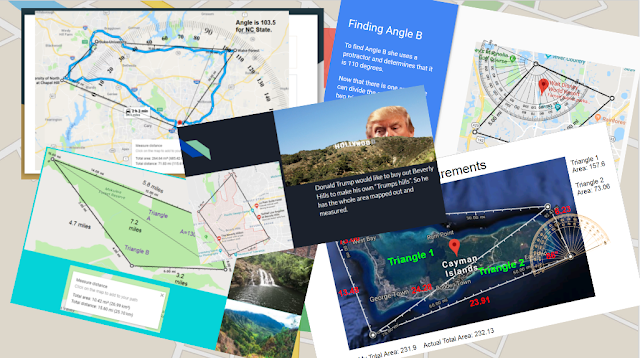Here is our Area Project.
To finish up our Triangle Trig Unit, we always give this project. We took this idea and updated it to work with our students.
Using Google Maps, our kids get to pick any place around the world. They use the measure distance tool to find the area of the piece of land. Their mission - to prove that Google has the correct area using triangle trig.

Students must create a quadrilateral, use a protractor overlay (png) image to find one angle, create a diagonal, find the diagonal using Law of Cosines, find the opposite angle, and then use the area formula to find the area of both triangles. Another portion of the project is to explain (in words) their mathematical correctness. The students also must come up with a creative story selling the piece of land.
Here are some submissions from our students this semester:
We really love this project! It gives students a chance to show off their creativity while demonstrating their knowledge of triangle trig.
~RJ & SSB
To finish up our Triangle Trig Unit, we always give this project. We took this idea and updated it to work with our students.
Using Google Maps, our kids get to pick any place around the world. They use the measure distance tool to find the area of the piece of land. Their mission - to prove that Google has the correct area using triangle trig.

Students must create a quadrilateral, use a protractor overlay (png) image to find one angle, create a diagonal, find the diagonal using Law of Cosines, find the opposite angle, and then use the area formula to find the area of both triangles. Another portion of the project is to explain (in words) their mathematical correctness. The students also must come up with a creative story selling the piece of land.
Here are some submissions from our students this semester:
We really love this project! It gives students a chance to show off their creativity while demonstrating their knowledge of triangle trig.
~RJ & SSB



Comments
Post a Comment